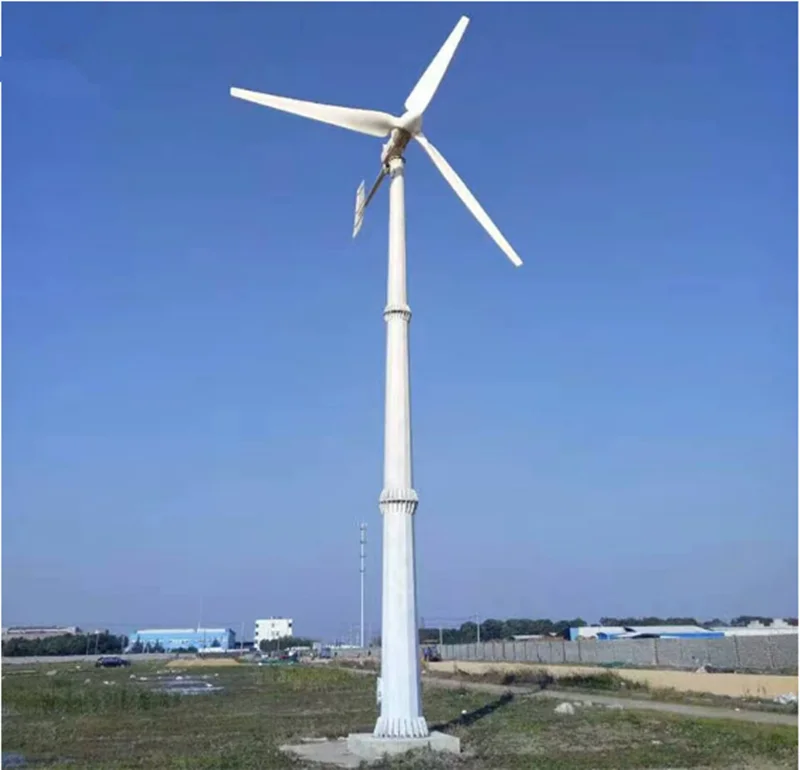

You can have varied wind resources within the same property. The standard wind sensor height used to obtain data for the DOE maps is 10 meters (33 feet). This requires placing the anemometer high enough to avoid turbulence created by trees, buildings, and other obstructions. The most accurate reading are taken at “hub height” (i.e., the elevation at the top of the wind turbine tower). You can do this with a recording anemometer, which generally costs $500 to $1,500. If you do not have on-site data and want to obtain a clearer, more predictable picture of your wind resource, you may wish to measure wind speeds at your location for a year. You will need site-specific data to determine the wind resource at your exact location. And a localized site with good winds, such as a ridgetop, may not show up on the maps. Of course, the maps are just a starting point – the actual wind resource on your site will vary depending on topography and structure interference. From these maps, you can learn if wind speeds in your area are strong enough to further investigate the wind resource. To get a general idea if your region has good wind resources, check out the DOE’s WINDExchange maps and NOAA’s wind climatology maps. You are comfortable with long-term investments.Local building codes or covenants allow you to legally erect a wind turbine on your property.The utility’s requirements for connecting your system to its grid are not prohibitively expensive.Utility-supplied electricity is expensive in your area (about 10 to 15 cents per kilowatt-hour).You live in an area with average annual wind speeds of at least 4.5 meters per second (10 miles per hour).You acknowledge the intermittent nature of wind power and have a strategy for using intermittent resources to meet your power needsĬonditions for grid-connected wind power systems:.You would like to reduce the environmental impact of electricity production.You have an interest in gaining energy independence from the utility.The cost of running a power line to a remote site to connect with the utility grid can be prohibitive, ranging from $15,000 to more than $50,000 per mile, depending on terrain. A grid connection is not available or can only be made through an expensive extension.You live in an area with average annual wind speeds of at least 4.0 meters per second (9 miles per hour).Either type of system can be practical if the following conditions exist.Ĭonditions for stand-alone wind power systems: Stand-alone wind energy systems can be appropriate for homes, farms, or even entire communities (a co-housing project, for example) that are far from the nearest utility lines. With the interconnections available today, switching takes place automatically. When the wind system produces more electricity than the household requires, the excess can be sold to the utility. If the turbine cannot deliver the amount of energy you need, the utility makes up the difference. A grid-connected wind turbine can reduce your consumption of utility-supplied electricity for lighting, appliances, and electric heat. Small wind energy systems can be used in connection with an electricity transmission and distribution system (called grid-connected systems), or in stand-alone applications that are not connected to the utility grid. They length of the payback period (the time before the savings resulting from your system equal the system cost) depends on the system you choose, the wind resource in your site, electric utility rates in your area, and how you use your wind system. If you are building a home in a remote location, a small wind energy system can help you avoid the high costs of extending utility power lines to your site.Īlthough wind energy systems involve a significant initial investment, they can be competitive with conventional energy sources when you account for a lifetime of reduced or altogether avoided utility costs. Wind energy systems reduce our dependence on fossil fuels, and they don’t emit greenhouse gases.

Wind energy systems provide a cushion against electricity price increases. Hybrid Wind Systems What Are the Benefits of Using Residential Wind Turbines? Potential Legal and Environmental Obstacles What are the benefits to homeowners from using wind turbines? The following will help you decide if a wind system is practical for you. Fortunately, there are also a number of information sources to help you. If you are a homeowner considering using residential wind turbines to power your home, there are a number of considerations.


 0 kommentar(er)
0 kommentar(er)
